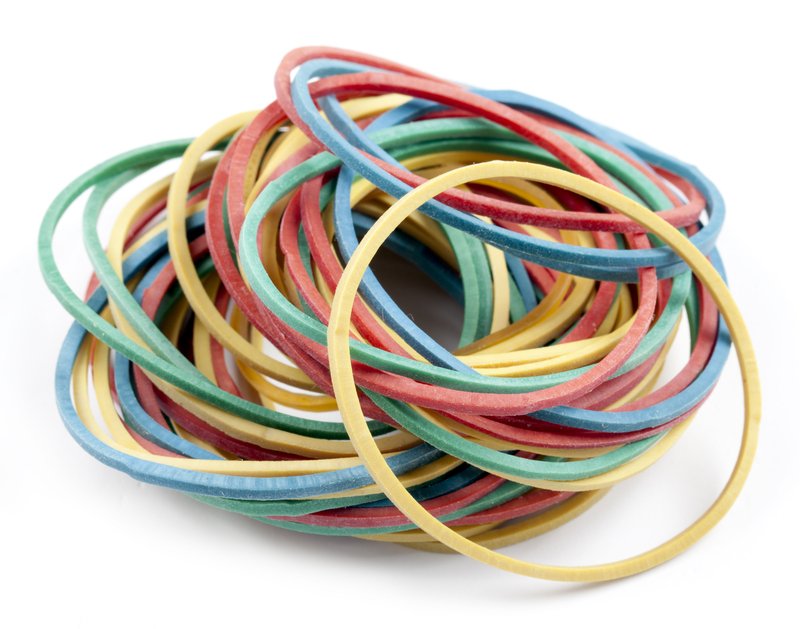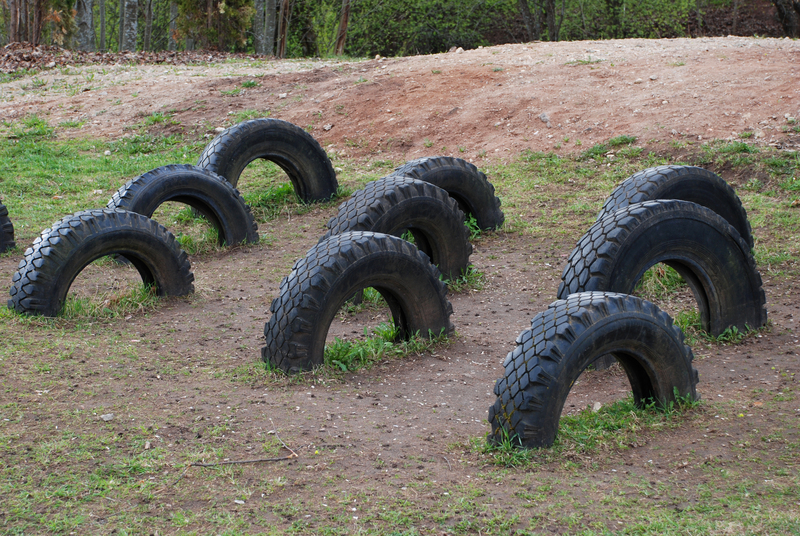Give Old Cookware a Second Life through Recycling
Do you have worn-out pots, pans, and kitchen gadgets taking up space in your cabinets? Instead of tossing those battered saucepans and rusty skillets into the landfill, consider recycling old cookware! Giving your old cookware a second life not only benefits the environment but can also spark your creativity, help declutter your kitchen, and even save you money. In this comprehensive guide, we'll explore how you can recycle old pots and pans, creative upcycling ideas, and responsible ways to dispose of unwanted kitchenware.

Why Recycle Old Cookware?
Each year, millions of tons of metal and nonstick cookware end up in landfills worldwide. Many of these items are made from durable materials like aluminum, stainless steel, and cast iron--resources that can be easily reused or transformed. By giving your used kitchenware a second life through cookware recycling or repurposing, you:
- Reduce Waste: Prevent non-biodegradable materials from clogging the landfill.
- Save Resources: Lower the demand for raw materials and reduce industrial pollution.
- Support the Circular Economy: Prolong the useful life of kitchen items.
- Conserve Energy: Recycling uses less energy than producing new metals.
- Spark Creativity: Old cookware can become planters, wall art, or even furniture!
Environmental Impact of Throwing Away Cookware
When you toss a fry pan or a baking sheet, you're sending valuable resources to waste. Aluminum, cast iron, stainless steel, and copper are all extensively mined worldwide, often resulting in environmental degradation. Mining emits carbon dioxide, contaminates water, and disrupts ecosystems. Recycling cookware or giving it a new purpose helps minimize this impact.
What Types of Cookware Can Be Recycled?
Not all cookware is created equal, and some are more recyclable than others. Here's a breakdown of what to look for:
- Stainless Steel Cookware: Robust and almost always recyclable. Remove non-metal parts first.
- Aluminum Pots and Pans: Most recycling centers accept clean aluminum cookware.
- Cast Iron Skillets: Very durable & can be recycled as scrap metal or restored for reuse.
- Copper Cookware: Valuable and highly recyclable if it's solid copper.
- Nonstick Pans: Trickier, since nonstick coatings (like Teflon) aren't recyclable. Some centers accept them if the coating is removed.
- Glass Bakeware: Tempered glass (like Pyrex) is usually NOT accepted in glass recycling due to its high melting point. Donate or upcycle instead!
- Ceramic Cookware: Difficult to recycle but can be creatively upcycled.
How to Prepare Old Cookware for Recycling
Proper preparation ensures your cookware is effectively recycled. Follow these steps:
- Clean Thoroughly: Remove food residue, grease, and any liners or handles from the cookware.
- Disassemble Composite Materials: Take off plastic, silicone, or wooden handles. Metal parts are typically recyclable; others aren't.
- Check Local Guidelines: Some recycling centers accept only specific metals or have requirements for cookware drop-offs.
- Group Metals Together: Keep aluminum, steel, and copper separated if possible for easier processing.
- Label Non-Standard Items: For mixed-materials (like ceramic-coated pans), ask your recycling provider how best to dispose of them.
Finding a Recycling Center for Old Cookware
Creative Ways to Upcycle Old Cookware
If your pots and pans are too battered for reuse or recycling, why not give your old cookware a second life with these creative DIY projects? With a little imagination, you can transform old pots, pans, and utensils into striking home, garden, or workshop accents.
Upcycling Ideas for Old Pots and Pans
- Planters: Turn saucepans, colanders, or frying pans into herb or flower planters. Drill drainage holes and fill with soil.
- Wall Clocks: Attach clock hands to a cleaned frying pan for a unique kitchen timepiece.
- Bird Feeders: Hang an old colander from a tree to serve as a stylish feeder for backyard birds.
- Garden Art: Paint or decorate old baking sheets and cast iron pans to make whimsical garden signs or stepping stones.
- Storage Solutions: Large stockpots can become tool holders in the garage or craft room.
- Decorative Shelves: Attach a shallow pan to the wall as a shelf or organizer.
Repurposing Cookware for Everyday Use
- Serving Trays: Old baking sheets can be spray painted and used as rustic serving trays.
- Kitchen Utensil Holders: Salvage an old saucepot as a holder for spoons and spatulas.
- Lamp Shades: Turn a metal colander into a funky pendant lamp for the kitchen.
- Compost Scoop: Cut down an old ladle or cup to use for scooping garden soil or compost.
Not only does upcycling reduce waste, but it can also infuse your home with one-of-a-kind decor items that reflect your personal style. Share your finished projects on social media to inspire others to recycle cookware and give it another chance at life!
Donate, Sell, or Swap Old Cookware
Some cookware may still have lots of life left! If your pots and pans are gently used, consider:
- Donating to Charities: Local shelters, soup kitchens, or thrift stores often welcome cookware donations.
- Selling Online: Platforms like Facebook Marketplace, Craigslist, or eBay are great places to find a new home for usable kitchenware.
- Swapping with Friends: Host a kitchenware swap party for a sustainable and social way to trade items.
Just remember to clean items and package them safely for their next home!
What to Do with Nonstick and Damaged Cookware
Nonstick pans with flaking or damaged coatings (especially Teflon) can't typically be recycled in household curbside bins, and their coatings can be harmful if ingested. Here's what you can do:
- Contact the Manufacturer: Some brands will take back old nonstick cookware for safe disposal or recycling.
- Check Specialty Recycling Programs: Certain recycling centers or hazardous waste facilities may accept nonstick pans after scrapping off any handles and packaging.
- Repurpose for Non-Food Use: If safe, old nonstick pans can be upcycled as paint mixing trays, craft organizers, or outside garden containers (not for edible plants).
If disposal is unavoidable, wrap damaged pans securely and follow your local city guidelines for landfill-bound waste.
Common Questions about Recycling Old Cookware
- Can I put old pots and pans in my curbside recycling bin?
- Usually, no. Unless your city specifically allows it, cookware should go to a scrap metal recycler or special collection point.
- Is cookware accepted with attached plastic or wood handles?
- Most metal recyclers request that non-metal parts be removed before recycling.
- What about glass or ceramic cookware?
- Tempered glass and glazed ceramics can't be recycled with container glass. Donate, upcycle, or dispose of safely.
- Is rusty or burnt cookware recyclable?
- Yes for metal cookware! Rust or scorch marks aren't a problem for metal recycling centers.

How to Extend the Lifespan of Your Cookware
Reducing the need to recycle starts with taking care of your kitchen tools. Here are a few tips for extending the life of your pots and pans:
- Hand Wash When Possible: Dishwashers can cause premature wear, especially on nonstick and aluminum surfaces.
- Avoid Metal Utensils on Nonstick Surfaces: This prevents scratching and flaking.
- Season Cast Iron and Carbon Steel: Regular oiling prevents rust and preserves nonstick qualities.
- Avoid High Heat: Overheating can warp or damage pans, especially nonstick varieties.
- Follow Manufacturer's Instructions: For cleaning, storing, and cooking practices.
When you care for your cookware, you delay the need for recycling or replacement.
Conclusion: The Responsible Chef's Choice
Giving old cookware a second life--whether through recycling, upcycling, donation, or resale--closes the loop on kitchen waste and helps protect our planet's resources. Embracing creative recycling practices means fewer items go to landfill, and more materials remain in use where they belong. The next time you clean out your cupboards, remember: don't throw away old pots and pans--give them a second chance through responsible disposal, recycling, or a fun DIY project!
Make sustainability part of your cooking journey. The planet, your wallet, and your kitchen will thank you!
Key Takeaways on Recycling Old Cookware
- Check Recycling Guidelines: Confirm your materials with local waste management before recycling.
- Separate and Prepare: Disassemble composite cookware and clean thoroughly for effective recycling.
- Upcycle for Fun: Turn worn-out kitchen tools into unique home and garden accessories.
- Donate or Sell Usable Items: Sharing gently used kitchenware reduces demand for new products.
- Dispose of Nonstick Carefull: Seek out safe disposal or recycling programs for coated pans.
By making these smart, sustainable choices, you transform your old cookware into an opportunity--to help the planet, express creativity, and inspire others to make eco-friendly choices in their kitchens. Happy (re)cycling!